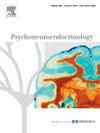Experimental stress induction in children and adolescents with the Trier Social Stress Test (TSST): A systematic review and meta-analysis
IF 3.4
2区 医学
Q2 ENDOCRINOLOGY & METABOLISM
引用次数: 0
Abstract
The Trier Social Stress Test (TSST) and its variations for children and adolescents are among the most frequently used laboratory stressors. A previous meta-analysis revealed moderate but robust psychobiological stress responses in children and adolescents. Here, we focused on non-clinical samples and performed both a systematic review as well as a meta-analysis for the following: (a) to provide an overview of study characteristics in children and adolescents, (b) to update the overview of the reported effect sizes, and (c) to identify established and new potential moderators. Reviewing 143 studies, we identified three major variants in practical use: the TSST-C, the TSST-M, and the original TSST. Although the studies were inconsistent in reporting methodological characteristics, the variants did not differ in exclusion criteria, main procedures (administration and preparation time, duration), and composition of the panel. Based on the 92 studies (N = 8291 participants) included in the meta-analysis, we identified an overall publication bias-corrected effect on salivary cortisol stress responses of Hedge’s g = 0.56, p < .0001. Moderation analysis revealed the proportion of girls, number of judges, and total duration of the stress test as significant moderators, all positive. Explorative analysis showed that higher baseline cortisol levels predicted lower baseline-peak reactivity. Overall, variations of the TSST for children and adolescents are suitable for inducing acute psychobiological stress responses in these samples. To promote open and reproducible (meta) science, raising the reporting standards for methods and results in future studies is desirable.
Trier社会压力测试(TSST)对儿童和青少年实验应激诱导的系统回顾和荟萃分析
针对儿童和青少年的特里尔社会压力测试(TSST)及其变体是最常用的实验室压力测试之一。之前的一项荟萃分析显示,儿童和青少年的心理生物学应激反应适中但很强。在此,我们以非临床样本为重点,进行了系统综述和荟萃分析,目的如下:(a) 概述儿童和青少年的研究特点,(b) 更新报告的效应大小概述,(c) 识别已有的和新的潜在调节因素。通过对 143 项研究的回顾,我们确定了实际应用中的三大变体:TSST-C、TSST-M 和原始 TSST。虽然这些研究在报告方法特征方面不一致,但这些变体在排除标准、主要程序(施测和准备时间、持续时间)以及小组组成方面没有差异。基于纳入荟萃分析的 92 项研究(N = 8291 名参与者),我们确定了对唾液皮质醇应激反应的总体发表偏差校正效应:Hedge's g = 0.56,p < .0001。调节分析表明,女生比例、评委人数和压力测试总持续时间是显著的调节因素,且均为正向调节。探索性分析表明,较高的基线皮质醇水平预示着较低的基线峰值反应性。总之,针对儿童和青少年的 TSST 变体适合在这些样本中诱导急性心理生物应激反应。为了促进开放和可重现(元)科学的发展,在未来的研究中提高方法和结果的报告标准是可取的。
本文章由计算机程序翻译,如有差异,请以英文原文为准。
求助全文
约1分钟内获得全文
求助全文
来源期刊

Psychoneuroendocrinology
医学-精神病学
CiteScore
7.40
自引率
8.10%
发文量
268
审稿时长
66 days
期刊介绍:
Psychoneuroendocrinology publishes papers dealing with the interrelated disciplines of psychology, neurobiology, endocrinology, immunology, neurology, and psychiatry, with an emphasis on multidisciplinary studies aiming at integrating these disciplines in terms of either basic research or clinical implications. One of the main goals is to understand how a variety of psychobiological factors interact in the expression of the stress response as it relates to the development and/or maintenance of neuropsychiatric illnesses.
 求助内容:
求助内容: 应助结果提醒方式:
应助结果提醒方式:


